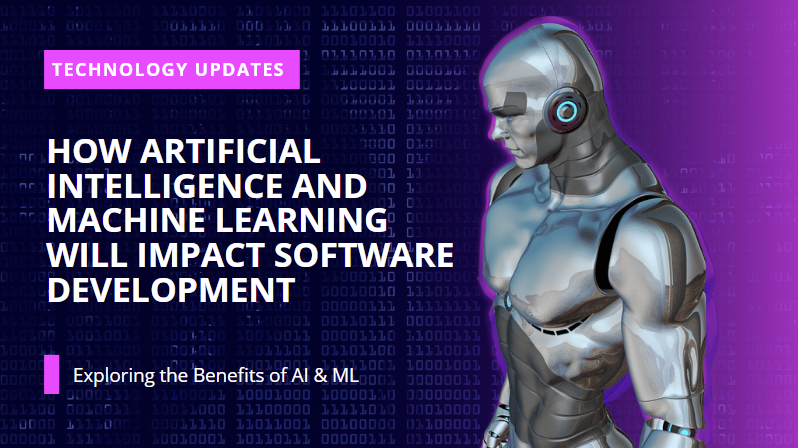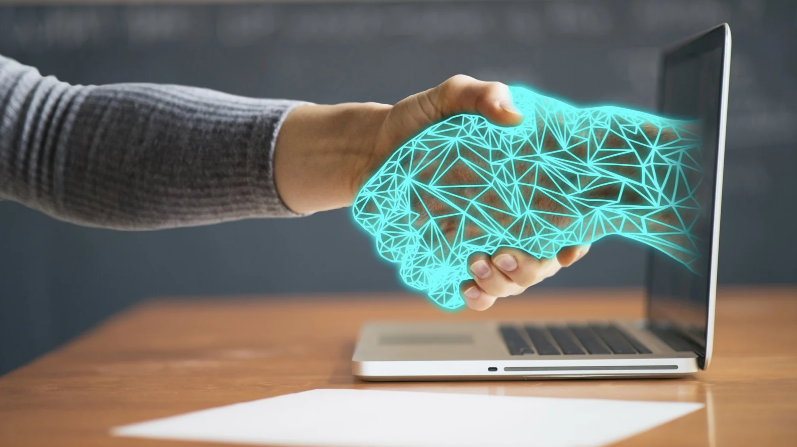How AI And ML Will Impact Software Development

News details
What Is Artificial Intelligence And Machine Learning?
AI stands for Artificial Intelligence, which is a branch of computer science that aims to create intelligent machines that can perform tasks that typically require human intelligence, such as recognizing speech, interpreting images, and making decisions. AI includes various techniques such as machine learning, natural language processing, and computer vision.
Machine learning (ML) is a subset of AI that involves training computer algorithms to learn from data and make predictions or decisions without being explicitly programmed. ML algorithms are designed to improve their performance over time as they are exposed to more data. There are three main types of machine learning: supervised learning, unsupervised learning, and reinforcement learning.
Supervised learning involves training an algorithm on a labeled dataset, where the correct output is already known, to make predictions on new, unlabeled data. Unsupervised learning involves training an algorithm on an unlabeled dataset to find patterns or groupings within the data. Reinforcement learning involves training an algorithm to make decisions based on rewards or punishments received for specific actions.
Together, AI and ML have many practical applications, from self-driving cars and voice assistants to fraud detection and predictive maintenance in industrial settings.

Impact Of Artificial Intelligence And Machine Learning In software development
Artificial intelligence (AI) and machine learning (ML) are rapidly transforming the way we approach software development. These technologies have the potential to make software development more efficient, more accurate, and more user-friendly, revolutionizing the way we create software applications.
Automated Code Generation
One area where AI and ML are having a significant impact is in automated code generation. AI-powered tools can analyze large datasets of code and generate new code that fits specific requirements. This can save developers a significant amount of time and effort, particularly when it comes to repetitive tasks or code that is required in multiple applications.
AI can be used to identify patterns in existing code, learn how to replicate those patterns, and generate new code that is both efficient and effective. Additionally, AI-powered code generators can analyze data sets and automatically generate code based on the insights gained from that data.
Improved Testing and Quality Assurance
AI and ML are also making a significant impact on the way we test software applications. With the help of machine learning algorithms, developers can identify bugs and errors in code more quickly and accurately than traditional manual testing methods.
ML algorithms can analyze large datasets of code to identify patterns of bugs and errors, as well as to predict potential issues before they arise. By doing so, they can significantly reduce the time and effort required for testing and quality assurance.
Natural Language Processing
Natural language processing (NLP) is another area where AI and ML are making a significant impact. NLP is a field of AI that focuses on teaching machines to understand and interpret human language.
In the context of software development, NLP can be used to create chatbots and virtual assistants that can understand and respond to user queries. These chatbots and virtual assistants can be used to provide support to users, answer frequently asked questions, and even troubleshoot common problems.
Predictive Analytics
AI and ML can also be used to improve the user experience of software applications through the use of predictive analytics. By analyzing large datasets of user behavior, machine learning algorithms can identify patterns and make predictions about future behavior.
This information can be used to create personalized software experiences for users, providing them with content and features that are most relevant to their interests and needs. Predictive analytics can also be used to identify potential areas of improvement in software applications, making it easier for developers to make changes that will improve the user experience.
Continuous Integration and Delivery
Finally, AI and ML can be used to automate the process of continuous integration and delivery. Continuous integration and delivery are software development practices that involve frequent code commits, automated testing, and rapid deployment of new features and updates.
By using AI and ML to automate these processes, developers can save time and reduce the risk of human error. This can make it easier to deploy new features and updates more quickly and efficiently, reducing the time required for software development cycles.
Conclusion
AI and ML are rapidly transforming the field of software development, providing developers with powerful tools and techniques that can make software development more efficient, accurate, and user-friendly. From automated code generation to improved testing and quality assurance, NLP, predictive analytics, and continuous integration and delivery, these technologies have the potential to significantly improve the software development process.
While AI and ML are not likely to replace human developers entirely, they will certainly reshape the way we approach software development. As these technologies continue to develop and mature, we can expect to see even more exciting applications in the field of software development, improving the quality and functionality of software applications and enhancing the user experience for millions of users around the world.










